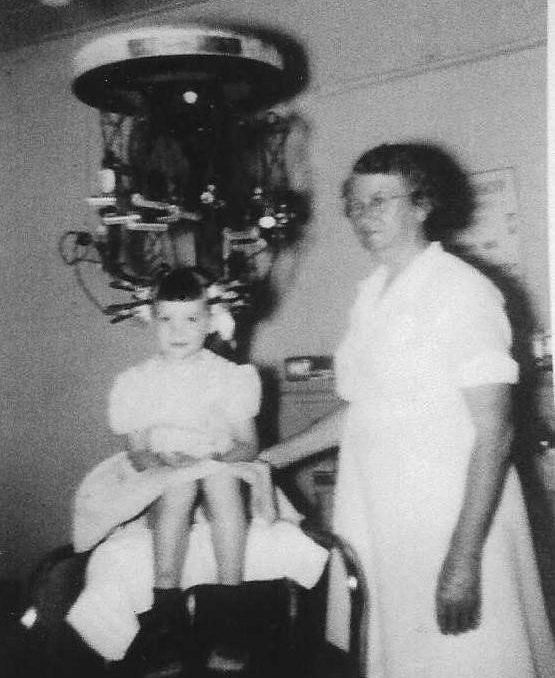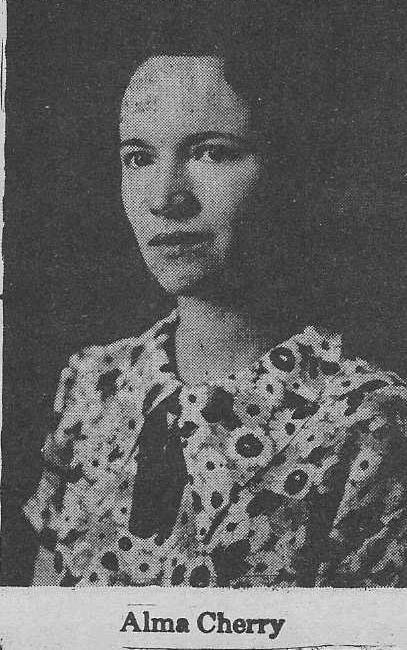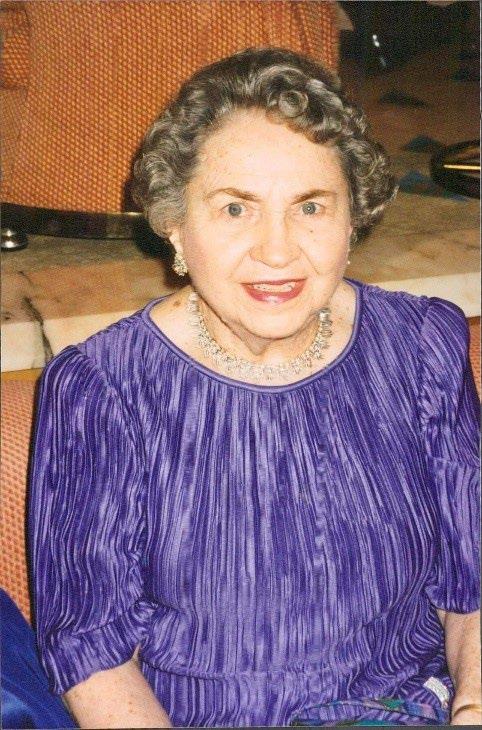
6 minute read
“Keeping The Beauty In Sanger”
By Sanger Area Historical Society and Museum
As Texas has always been known for its pretty ladies, so has Sanger, Texas. The ladies of Sanger always had their hair fixed perfectly or had it in rollers or bobby pins with a scarf to cover. There have been many beauty salons in Sanger over the years, but most older ones are nostalgic. The equipment used in those days ranged from contraptions to sit under for an hour to get the hair dried after the roll-up, or sometimes in the very early days, a machine that looked as though it was a science fiction machine used to perm the hair.
Pin-curls were wound around a finger and secured with a couple of bobby pins, usually made of metal. The bobby pins could also secure a hairdo, such as a French braid or ponytail. Bobby pins were named after the “bobbed” hairstyle. The inventor was Luis Marcus, and they lived in California after moving from Winnipeg, Manitoba. They were made during World War I and became a popular tool for a woman’s hairdo.
In later years the ladies faced the torture of brush rollers which helped secure the ringlets of hair as they were rolled close to the head. These made marvelous curls at the expense of tiny bristles sticking to the head. Later, a spongetype roller was introduced, which was an improvement, but sometime in the 60s, the hairdos were long and flowing, and orange juice cans became the device being used. For curly-haired ladies and prior to electric hair straighteners, the iron used to press clothes became the go-to for relaxing curls, making that long hair a luxurious straight hairdo.
There were many beauty salons in Sanger. Most were one-woman operations. One of the most memorable beauty operators was Miss Alma Cherry, who spent 48 years as an operator of her hair salon, Cherry’s Beauty Shop. It was located in the heart of the downtown area of Sanger. Miss Alma was born on July 4, 1902, in Parvin, Texas, and moved to Sanger in 1920.

Her father had purchased a garage in town, and Miss Alma planned to become a nurse.
An illness interfered with her plans, and after having her hair coiffed in Denton, the salon owner offered her a job shampooing the ladies’ hair in her salon. Miss Alma decided she could do the job of a beauty operator and borrowed $150 from her father for equipment, and moved to the back area of the R.V. Duncan Barbershop. She was not getting the customers she had hoped for and considered closing the shop at one time, but customers from Gainesville, Pilot Point, and other small towns had heard of Miss Alma. She remained open until her retirement in 1974. Miss Alma advertised faithfully in the Sanger Courier each week, and her ad read, “Oh so easy, a hairdo that falls into place with a flick of your comb.” Miss Alma was an elder and clerk of the congregation of the Presbyterian Church for 25 years. She was a stalwart of this church congregation.

Many more hairdressers were found in Sanger over many years. Edith Austin operated her salon on Bolivar Street, next to Alvin Brown’s Garage, and later became Ashcraft Garage. It was a small shop with two chairs and a local young lady, Carolyn Jones, began working for her in the 60s. At one time, Edith sold her business to Irene Akers and Alma Salmon and went to work for her sister in Denton at Austin’s Beauty Shop in March 1961. She then repurchased the shop, and Mrs. Akers worked for her under the new shop name of Edith’s Beauty Center. Later Mrs. Akers opened her shop on West Marshall Street in town. Edith’s weekly advertisements in the local Sanger Courier stated you could get your “Haircut with a 4-way method” and advertised that she carried Revlon products.
Carolyn Jones was a student in Fort Worth at Isabel’s Beauty School and later opened The Fashion Room after working with Edith Austin.
Bonnie Gheen’s shop, “Bonnie’s House of Beauty,” was the first business to open on the newly opened Interstate 35 in October 1959 after the freeway opened in September 1959. The small building was directly behind her husband’s filling station, which was on the exit at the south end of town. Bonnie operated this small salon for many years and secured the services of Mildred Burgoon, an experienced operator. Each week, Bonnie’s Sanger Courier ad was “Pretty as a Picture with your New Personalized Perm.” In these times, most ladies got their permanents every few months, and Bonnie was ready to make it happen.
Maude Burch lived in her small frame home on the south end of Third Street. She had two doors at the front of her home, and the door on the right entered her beauty salon. Many ladies were customers of Ms. Burch. She was born July 25, 1894, and passed away October 28, 1977, after many years of serving the ladies of Sanger.
Mildred Horst came to the beauty salon at a later age in life. Her husband was co-owner of Horst Brothers Market. After attending school to become a licensed beauty operator, she worked for Miss Alma Cherry and later became a business owner. Mrs. Horst passed away in 2005.
Lona Joyce Snellgrove decided she wanted to become a licensed beauty operator and owner of a salon at a later stage in her life. After obtaining her license, she opened Cecil’s Beauty Salon, named after her husband. Lona loved fixing the ladies’ hair in town and had a large customer base. Her shop was located on Fifth Street near Mildred Horst Fifth and Chapman Drive intersection. Mildred Burgoon and Coy Knightstep were employed at the shop, which was open six days a week. Lona was born on December 30, 1928, and died on January 20, 2021.


Ed Chestnut Barbershop
Not to take away from the gentlemen of Sanger, many barbershops were in operation over the years. Butch haircuts and flat tops were popular cuts for men. A few of these shops included:
Delbert Jones Barbershop Ed Chestnut’s Barbershop Windle’s Barbershop Watson’s Barbershop
Barbershops were typically where to get a haircut and a shave, but also a meeting of the men to discuss politics and affairs of the city or to talk.
Sanger can be proud of its history, and this is just a tiny nugget of history that makes up the community. Many good families raised their families in the small community, but there was always a supply of small businesses to accommodate the community.


